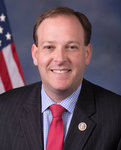

The New York SAFE Act prevents criminals and the dangerously mentally ill from buying guns, cracks down on illegal guns and bans only the most dangerous assault weapons. The legislation includes provisions that protect and preserve law-abiding citizens’ right to bear arms and does not restrict New Yorkers’ ability to buy, sell, keep or use guns. Additionally, the act also protects the privacy of pistol license holders by permitting them to notify a county clerk that they do not wish for their information to be released publicly.
Several states have also considered legislation with regards to who can and cannot carry firearms on school grounds. Bill A1896, allows security guards licensed as armed security guards to possess high-capacity magazines, is currently in the Assembly committee. According to the National Conference of State Legislature, New York State has a total of 131 school safety bills with 25 percent failed, 71 percent proposed and 3.1 percent enacted. For more information visit: https://www.ncsl.org/research/education/school-safety.aspx.
Additionally, earlier this year, Gov. Kathy Hochul signed a comprehensive ten-bill package closing gun law loopholes exposed in the tragic Buffalo and Uvalde shootings. Signed into law less than one month after, the package will ban the sale of semiautomatic rifles to anyone under 21 by requiring a license; prohibit the purchase of body armor by anyone not engaged in an eligible profession; strengthen the Red Flag Law by expanding the list of people who can file for Extreme Risk Protection Orders (ERPOs) and requiring law enforcement to file ERPOs under a very specified set of circumstances; make threatening mass harm a crime; require microstamping for new semiautomatic handguns; enhance information sharing between state, local and federal agencies when guns are used in crimes and strengthen requirements for gun dealers related to record-keeping and safeguarding their inventory; close the “other gun” loophole by revising and widening the definition of a firearm; eliminate the grandfathering of large capacity feeding devices; and require social media platforms to provide a mechanism for users to report hateful conduct.
Raising the Age to Purchase Semiautomatic Rifles
Legislation S.9458/A.10503 requires individuals to obtain a license prior to purchasing a semiautomatic rifle. Under preexisting New York State law, individuals must be 21 years or older to acquire a gun license.
Banning Body Armor
Legislation S.9407-B/A.10497 makes it illegal to purchase and sell body vests for anyone who is not engaged in an eligible profession. Eligible professions include law enforcement officers and other professions, which will be designated by the Department of State in consultation with other agencies. It also requires that all body vest sales are completed in-person.
Strengthening the Red Flag Law
Legislation S.9113-A/A.10502 expands who may file an Extreme Risk Protection Order (ERPO) petition to include health care practitioners who have examined an individual within the last six months.
It amends the firearm licensing statute to ensure that mental health practitioners’ reports on potentially harmful individuals are considered closely when determining whether to issue a firearm license.
It also requires police and district attorneys to file ERPO petitions when they have acquired credible information that an individual is likely to engage in conduct that would result in serious harm—either to themselves or others.
It requires State Police and the Municipal Police Training Council to create and disseminate policies and procedures to identify when an ERPO petition may be warranted.
Microstamping
Legislation S.4116-A/A.7926-A requires the Division of Criminal Justice Services to certify or decline to certify that microstamping-enabled pistols are technologically viable and if certified as viable, to establish programs and processes for the implementation of such technology; and establishes the crime of the unlawful sale of a non-microstamping-enabled firearm.
Microstamping is an innovative ammunition-marking technique that marks bullets and cartridge cases with a unique fingerprint each time a firearm is discharged. This allows investigators to link bullets and casings recovered at crime scenes to a specific gun and potentially other crimes.
Closing Loopholes
Legislation S.9456/A.10504 expands the definition of a “firearm” to include any weapon not defined in the Penal Law that is designed or may readily be converted to expel a projectile by action of an explosive. This is intended to capture firearms that have been modified to be shot from an arm brace, which are evading our current definitions of firearms and rifles.
Legislation S.9229-A/A.10428-A eliminates the grandfathering of large capacity ammunition feeding devices that were lawfully possessed prior to the enactment of the Safe Act or manufactured prior to 1994.
Legislation S.89-B/A.6716-A creates the crimes of making a threat of mass harm and aggravated making a threat of mass harm.
Enhancing Information Sharing
Legislation S.4970-A/A.1023-A requires enhanced reporting by law enforcement to the state and federal gun databases. Agencies must report seized or recovered guns to the criminal gun clearinghouse; participate in the ATF’s collective data sharing program; and enter the make, model, caliber, and serial number of the gun into the national crime information center.
The law also requires gun dealers to enact uniform security and reporting standards. It prohibits those under 18 and not accompanied by a parent from entering certain locations of a gun dealer’s premises and requires training for all employees on conducting firearm, rifle, and shotgun transfers, including identification of and response to illegal purchases. It also requires State Police to conduct inspections of gun dealers every three years.
Improving Response and Reporting of Hateful and Threatening Social Media Content
Legislation S.4511-A/A.7865-A requires social media networks in New York to provide a clear and concise policy regarding how they would respond to incidents of hateful conduct on their platform and maintain easily accessible mechanisms for reporting hateful conduct on those platforms
Legislation S.9465/A.10501 creates a new Task Force on social media and Violent Extremism. Housed in the Office of the Attorney General, the Task Force will study and investigate the role of social media companies in promoting and facilitating violent extremism and domestic terrorism online.
This robust set of new laws, designed to provide immediate enhanced protections and developed and approved in partnership with Majority Leader Andrea Stewart-Cousins and Speaker Carl Heastie, builds on two Executive Orders issued in the immediate wake of the Buffalo shooting.
Gov. Kathy Hochul (D):
“Gun violence is an epidemic that is tearing our country apart. Thoughts and prayers won’t fix this, but taking strong action will. In New York, we’re taking bold steps to protect the people of our state. I am proud to sign a comprehensive bill package that prohibits the sale of semiautomatic weapons to people under 21, bans body armor sales outside of people in select professions, closes critical gun law loopholes and strengthens our red-flag law to keep guns away from dangerous people—new measures that I believe will save lives. I am thankful to majority leader Stewart-Cousins, speaker Heastie, and all our legislative partners for acting with the urgency and thoughtfulness that this issue demands. While we are taking expedient action to enhance New York State’s nation-leading gun laws, we recognize that gun violence is a nationwide problem. I once again urge Congress to follow our lead and take immediate action to pass meaningful gun violence prevention measures. Lives depend on it.”
Congressman Lee Zeldin (R):
“The text of the Senate legislation has not been released yet. Once it is, we will review it. I support measures like the Stop II Act, which directs funding to programs that aid in the hiring of school resource officers. I’m supportive of schools utilizing a single point of entry, and trained, armed school resources officers on site working closely with local law enforcement. Previously, I voted for the STOP School Violence Act to provide grants to local and state governments for enhancing safety measures at schools, such as the installation of metal detectors.”
Assemblyman Joe DeStefano (R):
“Rather than impinge on the Second Amendment rights of legitimate gun owners, I believe we should focus on hardening our schools and protecting the students. Security must be improved to prevent entry by unauthorized persons, and fully trained and vetted educators and security guards should be allowed to carry weapons to protect the classrooms. Assailants would think twice about entering a school with the intent to do harm if they knew there were people in that building who could fight back. Congress, politicians, and almost every area where people meet are protected by tight security and armed personnel. Why not our schools?”
Sen. Alexis Weik and congressman Andrew Garbarino declined to comment.